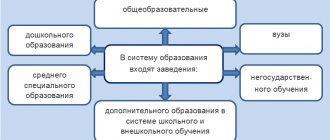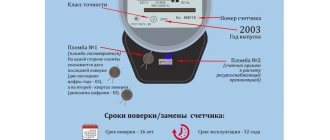How is GO prescribed?
Customers specify warranty obligations and the supplier’s liability for violation of their fulfillment in each contract.
The rules for establishing and applying them are prescribed in civil legislation. The Civil Code regulates the guarantee for the quality of products sold (Article 470 of the Civil Code of the Russian Federation), for work performed (Article 722 of the Civil Code of the Russian Federation) and for construction work (Article 755 of the Civil Code of the Russian Federation). The warranty period under 44-FZ depends on the nature of the products supplied, work performed or services provided. The supplier provides a warranty for a period not less than that of the manufacturer.
If the technical documents for the supply of machinery and equipment contain warranty requirements, then the customer is obliged to specify in the procurement documentation what the warranty obligations are under 44-FZ: duration of obligations, volume of quality, requirements for service, maintenance costs, installation and commissioning equipment for the entire warranty period. The customer establishes in the documentation a strict requirement for such a period (for example, 5 years) in contract work on real estate on the basis of Art. 737 Civil Code.
ConsultantPlus experts analyzed what warranty obligations the contractor bears under a civil contract. Use these instructions for free.
To read, you will need access to the system: .
Fulfillment of warranty obligations
In the absence of documented deadlines for repairs, the defect is eliminated in the shortest possible period sufficient to carry it out. The maximum period of restoration work cannot exceed forty-five days.
The length of the warranty period depends on the type of product. It is installed based on the duration of operation and technical complexity. Maintenance is provided free of charge during this period.
The warranty applies to:
- Manufacturing defects, use of low-quality materials, which caused the defect;
- Violation of the product assembly diagram.
To exercise the right to warranty repairs, the client has the right to contact a store or service center, providing the damaged product, a copy of the purchase contract, and a warranty document.
The repair center will examine the product to determine the cause of the defect. If the expert's conclusion indicates that the cause of the defect is a violation of operating rules, the buyer loses the right to free service. Also a guarantor. the obligation does not apply in the case of:
- Blank or incorrectly completed warranty card. See below for an example of a correctly completed warranty card form;
- The defect was caused by the installation of incorrect software;
- The client violated the rules for using or storing the product;
- Mechanical damage caused by improper transportation or other external factors;
- The occurrence of a defect due to depreciation;
- Carrying out repairs on your own or with the help of outside specialists who are not employees of the service center;
- Force Majeure.
If the cause of the breakdown is the fault of the manufacturer, restoration work is paid for by the entrepreneur who sold the product or the manufacturing company. Upon completion of the repair, the service center provides a certificate of work performed indicating the spare parts that were replaced.
When civil defense is required
Contract legislation explains in what cases the provision of warranty obligations is prescribed if the requirements for them are established by Art. 96 44-FZ and tender documentation. This is indicated in paragraph 1 of Part 13 of Art. 34 of the Federal Law on the Contract System. From July 1, 2020, customers have the right, but not the obligation, to demand the guarantee obligations of 44-FZ.
An example of a requirement to provide assurance from a draft government contract:
IMPORTANT!
From 01/01/2022, changes to 44-FZ will introduce independent guarantees, which participants will provide instead of bank guarantees (clause 28 of Article 5 of Law No. 360-FZ), and the register of bank guarantees will replace the register of independent guarantees.
From 01/01/2022, certifications will begin to be issued:
- banks according to the list approved by the government;
- State Development Corporation "VEB.RF";
- guarantee organizations from regions;
- Eurasian Development Bank.
Guarantees in procurement for SMP and SONKO
From 01/01/2021, orders for SMP and SONKO are subject to general rules for establishing guarantee obligations in connection with the termination of the grace period until 12/31/2020 under Part 64 of Art. 112 44-FZ: the customer requires the provision of certification, if necessary.
Such suppliers are exempt from providing guarantee obligations under 44-FZ for SMP from 04/01/2020 if they provided information about three contracts without penalties, closed 3 years before filing an application for participation in an amount not less than the initial (maximum) contract price (Part. 8.1 Article 96 44-FZ). This rule applies if the customer has established a security requirement in the tender documentation. Accordingly, the amount of warranty obligations 44-FZ with the latest amendments in 2021 for SMP, if there are advantages in procurement, may be 0 rubles.
How much does the warranty cost?
For issuing a guarantee, the bank usually charges a commission ranging from 2 to 10% of the collateral amount.
The exact cost depends on:
- size of the guarantee amount : the larger the amount, the greater the risk the bank takes, therefore the commission will be greater;
- validity period : the longer the warranty lasts, the more expensive it is;
- Availability of collateral : a guarantee not secured by a collateral or surety will also cost more.
How to establish a product warranty
All products purchased and supplied to the customer must comply with the conditions established by the contract. Goods must meet such conditions for a specific time period (Article 470 of the Civil Code of the Russian Federation). This period of time determines the warranty for the product.
If you choose a supplier of new machinery and equipment, then include in the documentation the requirements for the quality guarantee of goods under 44-FZ from the manufacturer or supplier and its validity period. Documents are transferred and filled out along with the goods. Obligations must apply both to the product itself and to all its components.
Instructions on how to specify the warranty period in a supply agreement:
- Set the required deadline.
- Indicate that the validity period begins from the moment the goods are delivered to the government customer.
Please note that the validity period is interrupted for a period when the customer, for one reason or another, is unable to use the product, which must be proven. The supplier's liability will arise if the defects arose before the acceptance of the goods by the government customer or for reasons that occurred before the date of acceptance (clause 5 of Article 477 of the Civil Code of the Russian Federation).
Here is an example of how to specify the requirements for a product manufacturer’s warranty under 44-FZ in tender documentation:
Official distributor
Warranty terms
- General provisions.
- Documents confirming the guarantee.
- Rules for acceptance and issue of equipment.
- Equipment diagnostics.
- Terms and conditions of warranty repairs.
- Refusal of warranty repairs.
1.
General Provisions.
Under the terms of this warranty, the manufacturer warrants that the devices are free from defects in manufacturing and workmanship that could jeopardize or impair the functionality of the device, provided that the purchaser has read the information contained in the User's Manual and that the specified number of copies for the specific type of equipment or the maximum load is not exceeded.
However, this manufacturer's warranty does not apply to wear parts inside the printer or related paper options (rubber rollers, separators, etc.), consumables, or their replacement. This manufacturer's warranty covers the elimination of all faults or malfunctions that occur in the device and are covered by this manufacturer's warranty, provided that they occur during the warranty period.
Installation of repair kits (at the customer's expense) at intervals prescribed by the manufacturer is a prerequisite for these warranties to take effect.
In case of malfunctions due to the fault of the manufacturer, spare (non-resource) parts are replaced.
Spare (non-resource) parts
— any parts and elements whose service life does not depend on the volume of copying/printing. For example: motors, electronic boards, displays, etc.
Resource (regulatory) details
– any parts and elements whose service life depends on the volume of copying/printing, and which, in accordance with the technical documentation for the equipment, must be replaced after a certain number of prints are made by an authorized technical specialist. For example: photoconductors, corotrons, charge rollers, developers, feed rollers, brake rollers and pads; heating and pressure rollers; cleaning knives; shafts and transfer belts; drive belts; filters, etc. If the specified products are changed only as part of assemblies, then such assemblies also belong to resource parts. The exact list of resource parts is given in the technical documentation for the equipment
Warranty obligations do not apply to:
- to malfunctions and damage resulting from improper use, incorrect or defective configuration, installation or support, external factors such as damage in transit, mechanical damage, as well as repairs and modifications made by unauthorized third parties, operation of equipment without complying with external requirements environment published in the Operating Manual.
- for damage resulting from the use of improperly selected supplies (including, but not limited to, counterfeit and compatible supplies manufactured by third parties), installation and support of applications, network software and drivers that are not covered by this warranty
- for the service life of consumables and resource parts, including those supplied with the equipment;
- the compatibility of the equipment with third party hardware and software and possible damages associated with such incompatibility.
In particular, the manufacturer's warranty does not include:
- cleaning and maintenance of equipment in accordance with the User Manual;
- any paper jam other than due to a manufacturing defect;
- any updates to the operating system installed on the equipment that become available, even if such an update may improve the performance of the equipment;
- installation of consumables or repair kits at intervals prescribed by the manufacturer, replacement of consumables as a result of their malfunction;
2.
Documents confirming the guarantee.
- Warranty card containing the model name, serial number of the product, date of sale, name of the seller
- Invoice or invoice.
- The above documents must be certified by a clearly visible company seal and the seller's signature.
- A lost warranty card cannot be restored and its replacement with a copy is not allowed.
3. Rules for acceptance and issue of equipment.
- Equipment is accepted for warranty repair from 9-00 to 17-00, Monday to Friday, with the exception of established holidays. Delivery of equipment for warranty repair and back is carried out by the efforts and at the expense of the Buyer.
- Acceptance of equipment is formalized in a printed form, which indicates the model and serial number of the equipment provided for repair, the date of acceptance of the order, the type of work, all faults of the equipment being handed over identified by the consumer in his words, and other necessary data related to the specifics of the work performed. Equipment is accepted for free warranty service only if all necessary documents are available. The Service Center independently decides on the methods and means of repairing equipment, in accordance with the manufacturer’s recommendations.
- External inspection of equipment is carried out in the presence of the client or his representative. Equipment, with the consent of the client, is accepted without disassembling and checking for faults, without checking for internal damage. The Client agrees that all faults and internal damage that may be detected in the equipment during diagnostics (including hidden defects) arose before the equipment was received by the service center. The Client agrees that the equipment is accepted for diagnostics and possible subsequent repairs.
- In the absence of a reported malfunction or refusal of warranty service, the service will be reclassified as paid, and the Client will be asked to either repair the fault as part of a paid repair, or pay for diagnostics in case of refusal of repair.
- If the product is subject to warranty repair, the product is accepted for repair, otherwise the buyer is issued a corresponding certificate of refusal of warranty repair indicating the reasons.
4. Equipment diagnostics.
- Diagnostics of a malfunction is an integral part of repair or maintenance in order to determine the presence, cause and nature of the declared malfunction, and further transfer of the product for elimination of deficiencies. If the reported malfunction is periodic, the start of the diagnosis is considered to be the day the defect appears in the ASC.
- In the event that the diagnostic results do not confirm the malfunction stated by the client, the client agrees to pay the cost of equipment diagnostic services in accordance with the current price list of the Service Center. Until payment for diagnostic work is made, the client’s equipment is kept by the contractor.
5.
Terms and conditions of warranty repairs.
- Warranty repairs of equipment are carried out on the territory of the Service Center, except in special cases.
- All repairs are carried out only in relation to defects declared by the client and indicated in the receipt. Warranty obligations also apply only to these works and parts or units replaced during the ongoing repair process.
- The Contractor is not responsible for the safety of information on various storage media, unless the work on storing information is formalized as a separate paid service.
- Warranty repairs are carried out within 45 working days, depending on the complexity of the work and the availability of the necessary spare parts from the manufacturer.
- If the consumer fails to show up to receive the result of the work performed or otherwise evades the consumer from accepting the equipment handed over for repair, the contractor does not bear any responsibility for the equipment in which the consumer has lost interest and has the right, after 30 (thirty) days, to dispose of this equipment or sell it at the residual value to cover the costs of its storage.
6. Refusal of warranty repairs.
The fulfillment of warranty obligations may be refused in the following cases:
- absence of a receipt and/or warranty card, or its incorrect completion, or presentation of a warranty card of a different type;
- the presence of corrections or blots in the warranty card, damage or traces of re-sticking warranty stickers, the presence of foreign stickers on the equipment, the serial number of the equipment does not correspond to the number specified in the warranty card;
- installation, repair or routine (preventative) work, as well as any unauthorized access to internal components and parts of equipment by persons not authorized by the manufacturer to carry out these actions;
- damage caused by using the equipment in deviations from the requirements established in the User Manual. For example, damage caused by contamination inside the product due to lack of regular cleaning, damage caused by an electrical connection with fluctuations or inappropriate mains voltage, and damage caused by external operating conditions such as increased levels of dust, relative humidity, gases and steam generation , lightning strikes, fire, flooding, etc.;
- exceeding the number of copies per month;
- uneven production of the permitted number of copies per month, specified in the manufacturer’s warranty card, during the month/quarter;
- Damage manifestly caused to the equipment by the use of any consumables that are not original consumables or defective paper, or by the use of any connection or other options, accessories or products of third parties that are not approved for use by the manufacturer;
- any damage caused to the equipment by the use of any labels or paper containing adhesive elements;
- untimely implementation of routine (preventive) work;
- foreign objects, insects, animals or liquids entering the equipment;
- mechanical damage to equipment (internal or external);
- modifications to the hardware or software of the equipment, if this modification is not recommended by the manufacturer;
- if the equipment is damaged as a result of improper operation, transportation, storage, or the serial number or manufacturer's seals are damaged.
Sample warranty statement
How to establish a guarantee for work
The quality of the work performed by the contractor must fully comply with the conditions established by the contract during the warranty period under the contract (Article 721 of the Civil Code of the Russian Federation). The contractor's liability occurs beyond the period specified in the contract, but within a 2-year period from the date of signing the acceptance certificate for the work performed, if the customer proves that the defects arose before the transfer of work (clause 4 of Article 724 of the Civil Code of the Russian Federation).
Here is one example of how to include warranty obligations under 44-FZ for work performed in a contract:
How to prescribe a service order
This concept is not defined in 44-FZ, but on the basis of Part 4 of Art. 33 44-FZ, customers establish a service period for GWS and the scope of provision of measures to ensure the quality of their service. If machinery and equipment are purchased, the customer is obliged to establish such requirements for warranty service.
If defects in goods or shortcomings in works and services were not specified by the contractor, and the customer discovered them during the warranty period, then the buyer has the right to demand that the supplier correct the violations free of charge (clause 1 of Article 475, clause 2 of Article 477 of the Civil Code of the Russian Federation).
Such service is specified in the contract along with the warranty period. In the contractual terms, the obligation is understood as the supplier’s performance of work to eliminate shortcomings and defects identified after acceptance of the GWS purchased by the customer, but during the warranty period. This includes technical and other maintenance, technical inspection, replacement of parts, etc. (letter of the Federal Tax Service No. 20-12/092926 dated 10/03/2008).
How to determine the amount of security
Providing warranty obligations under 44-FZ is money or a bank guarantee that is provided to the customer for the period of service. In Part 6 of Art. 96 of the Law on the Contract System states that the amount of guarantee obligations under 44-FZ (OGO) does not exceed 10 percent of the initial (maximum) contract price (NMCP). The state customer himself determines the procedure and terms for providing security in the contract, even when he uses standard forms that do not contain such a provision. This is enshrined in paragraph 1 of Part 13 of Art. 34 44-FZ.
Types of warranty service
If there is a defect due to the fault of the manufacturer, a bona fide customer has the right by law to demand that the seller fulfill the following warranty obligations:
- Exchange of a low-quality product for a similar one;
- Exchange of a product for similar products with recalculation of cost;
- Carrying out restoration work paid for by the entrepreneur;
- Termination of the agreement to purchase the product with a refund of the amount paid.
After repairs have been carried out, it is not possible to exchange the product or return the money for the purchase. Therefore, if complex technical equipment breaks down, it is worth seeking a replacement of the product or a refund of its cost.
How to prescribe the procedure and terms of provision
When determining the procedure and period for providing security for the fulfillment of warranty obligations under 44-FZ, please note that according to Part 7.1 of Art. 94 44-FZ, you can sign an acceptance certificate when the supplier has provided warranty obligations. In Part 3 of Art. 96 44-FZ stipulates that for this, the supplier transfers a bank guarantee for warranty obligations under the 44-FZ contract or sends money to the customer’s account. As for the period, one month is added to the service period, then the minimum period for “freezing” the customer’s money or the validity of the bank’s guarantee will be obtained.
For example, if in government procurement of construction work for a capital construction project, the state customer prescribes a warranty period for the work performed under 44-FZ for 5 years under Art. 756 of the Civil Code, then the contractor will have to obtain a bank guarantee for 5 years + 1 month. or “freeze” money for this period in the customer’s personal account.
The customer requires security for obligations under the contract, even if the contract is not enforced. For example, in an electronic request for quotations for the supply of computer equipment. With this method of determining the supplier, establishing contract security is the customer’s right, not an obligation.
IMPORTANT!
Both government institutions and small businesses (SMB) provide a guarantee if they fail to provide at least 3 contracts completed without complaints, which in total constitute the NMCC. This is enshrined in parts 8 and 8.1. Art. 96 of the Law on the Contract System.
Advantages of a bank guarantee
the principal the opportunity to:
- do not withdraw money from circulation for a long period of time;
- conclude a deal if the counterparty doubts his reliability or solvency.
the beneficiary receives money quickly and easily.
Example 1. The price of a government contract is 2 million rubles, and the validity period is 1 year. The contract must be secured by a bank guarantee or an amount of 20% of its price. That is, the executing company must either freeze 400 thousand rubles for a year or obtain a guarantee from the bank. The bank commission is 2%. If the executing company chooses to provide a guarantee, then it will pay the bank 8 thousand rubles. This is more profitable for the company than freezing 400 thousand rubles for a year.
Example 2. The buyer cannot pay for the equipment, but is ready to provide real estate as collateral. This situation is not profitable for the seller. He does not have the resources and capabilities to work with collateral. And he agrees to a bank guarantee. After all, in case of non-payment of the debt, he will be able to quickly receive money under the guarantee, and the bank will take care of the collateral property.
Example 3. The customer is afraid of poor quality repair work on the building by the contractor. If problems arise, you will have to go to court, conduct examinations, and collect the debt under a writ of execution. This may take several months, and in the worst case, it will last for years. If the agreement is secured by a guarantee, the beneficiary will be able to receive the money immediately.
How to accept collateral
Accept before you sign the acceptance documents. The Law on the Contract System did not stipulate how to accept documents confirming the manufacturer’s and supplier’s warranty for goods 44-FZ, if the goods are delivered in parts (for example, the supplier ships computer equipment in batches).
According to Part 7.1 of Art. 94 44-FZ, the supplier does not provide warranty service when it closes a stage. But the deadline for the batch runs immediately after shipment and execution of acceptance documents. If you do not require guaranteed service for some of the products that the customer already has, then the fulfillment of these obligations is not guaranteed. When accepting in parts, require that obligations be provided for the volume of products already shipped.
IMPORTANT!
The total collateral provided should not exceed 10 percent of the NMCC.









